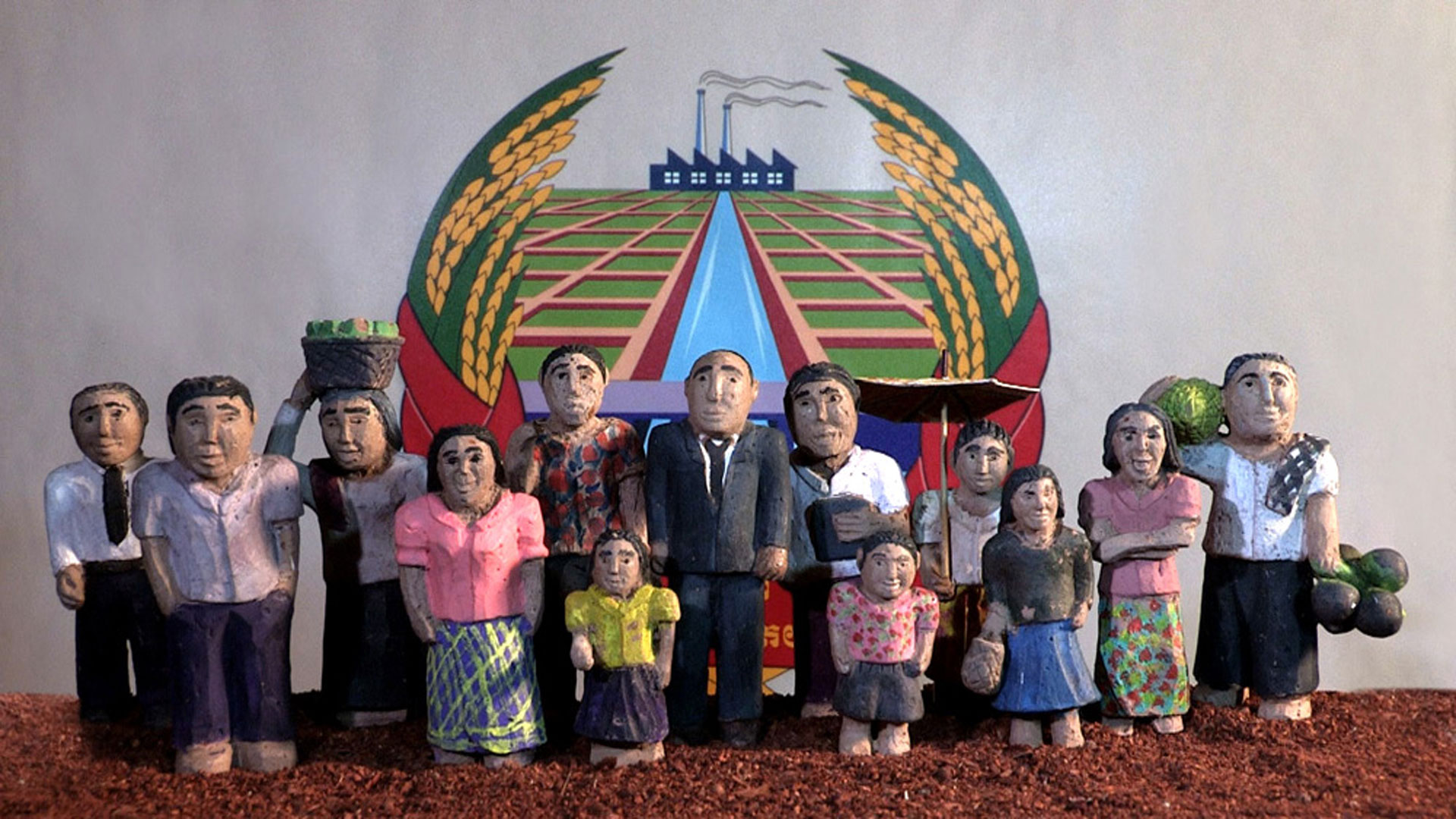By Chlotrudis Independent Film Society
Rating: 4.25 cats
Director: Rithy Panh

Original language title: L'image manquante
Country: cambodia, france
Year: 2014
Running time: 92
IMDB: http://www.imdb.com/title/tt2852470/combined
Jason says: “I passed on seeing THE MISSING PICTURE one night this week, overstating in my head how tight a squeeze it would be to get to the theater on time because I wasn’t in the mood for it that night. The trouble with that thinking, though, is that one might never truly be in the mood for a documentary about someone’s experiences in a Khmer Rouge labor camp, especially during the short window such a film will play theatrically in most cities, even with an Oscar nomination to its name. So, considering that, I went the next day, and was glad I did; if nothing else, the way Rithy Panh chooses to tell his story is quite memorable.
“The story itself is horrific, although one that is frequently lost amid history: Director Rithy Panh was living in Phnom Penh, part of a middle-class family, when Pol Pot and the Khmer Rouge took the city in 1975. From there his story matches that of many others: Assigned new first names, clothes dyed a uniform black, he and his family are put to work in a camp growing rice without nearly enough food, water, or medicine to make this experiment in a new Kampuchea work. A great many die, with Panh’s survival seeming equal parts tenacity and randomness.
“Panh has produced, directed, and appeared in plenty of conventional documentaries about those events over the course of his adult life, so this time out he tries something different. There are no on-screen interviews in this movie, just narration spoken by Randal Douc, a stream-of-consciousness ramble that captures the confusion of a child thrown into strange, dangerous, and quite frankly insane environment, even as an adult sorrow is an important aspect of the tone. Douc’s voice is the soundtrack to mostly black-and-white stock footage at times, while at others the screen is filled with hand-carved and painted clay figurines, set up in dioramas to tell Panh’s personal story which neither pre-revolutionary stock footage nor propaganda shots of the camp can convey.
“It’s a fascinating and brilliant device. Panh shows us his hands carving the figurines in close-up, and when this is seen with his words from the start of the film about how one returns to childhood at around fifty years of age in mind, we see a man quite literally trying to reconstruct his memories and childhood. When he’s just doing it with the models, it’s eye-catching enough – while the figures are simple in design, often cute, though they communicate a full range of emotions well, a scene will often include many of them set among impressively detailed backgrounds (sometimes detailed enough that a rare bit of color footage shot from the air can be confused with these reconstructions). There’s unexpected brilliance when he and the other filmmakers combine the techniques, though: The colorful clay people seem more tragically lost when composited into a monochromatic street scene, for instance, while other bits of multimedia integration could be either deliberate or unwitting demonstration of how memory is often an after-the-fact construct from multiple sources and work either way.
“Sometimes, an image doesn’t need anything but a little bit of context to hit home, such as when we see shots of an empty Phnom Penh, abandoned because Pol Pot insisted on everyone living the communal, agrarian life. Sometimes it’s simple violence. The extreme nature of this autocracy does serve as a double-edged sword where the film is concerned, though: Though the narration will occasionally make mention of how some at the time discussed Kampuchea as an experiment in a nation-sized laboratory, there are actually only so many ways to say ‘they dehumanized, starved, and murdered people’ before a viewer might, guiltily, start wondering if Panh is just going to keep repeating the same things.
“He does, a bit, and he goes off on the occasional tangent as well. As a result it can be a little difficult to pick out whether the ugly facts or the presentation are what had me ready to go ten or fifteen minutes before the movie was over. I’m going to go with the former and be grateful that I have the luxury of being done with the Khmer Rouge after an hour and a half – especially since I never tired of the interesting way Panh told his story otherwise. 4.25 cats
“Seen 9 April 2014 in Landmark Kendall Square #9 (first-run, DCP)”
